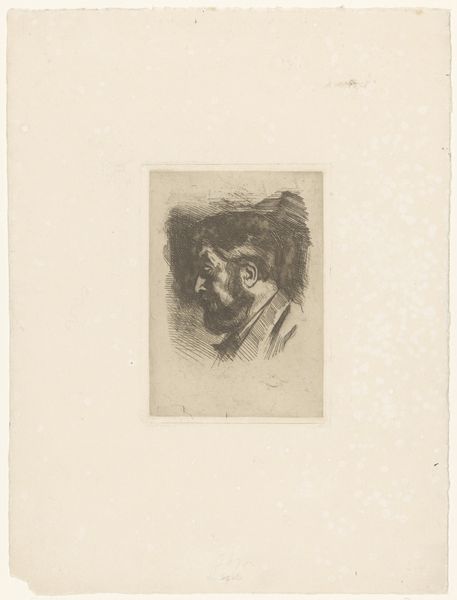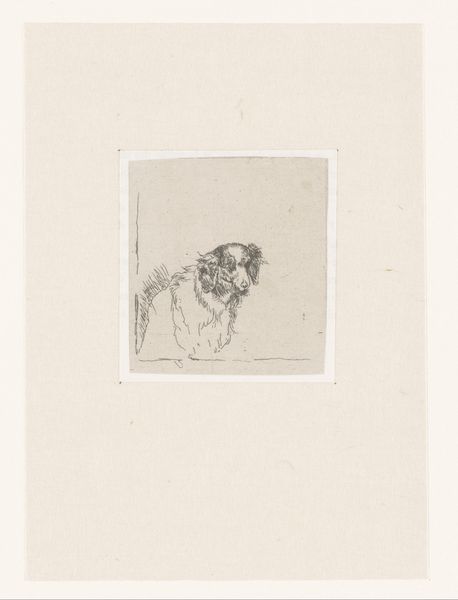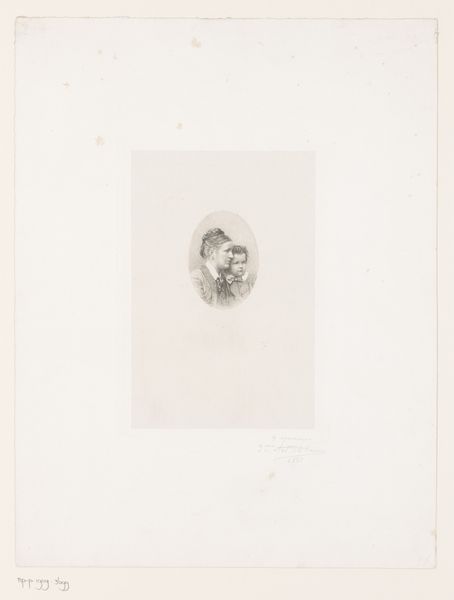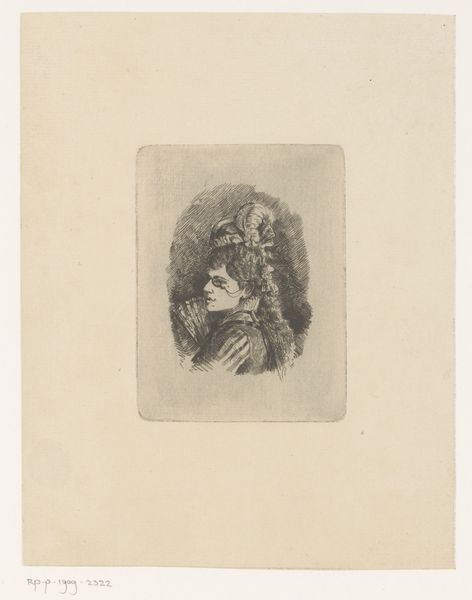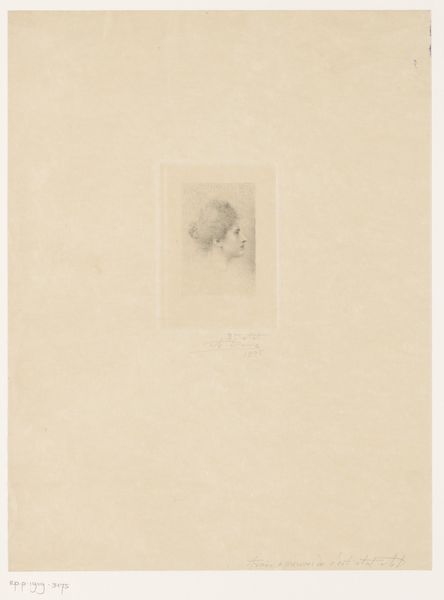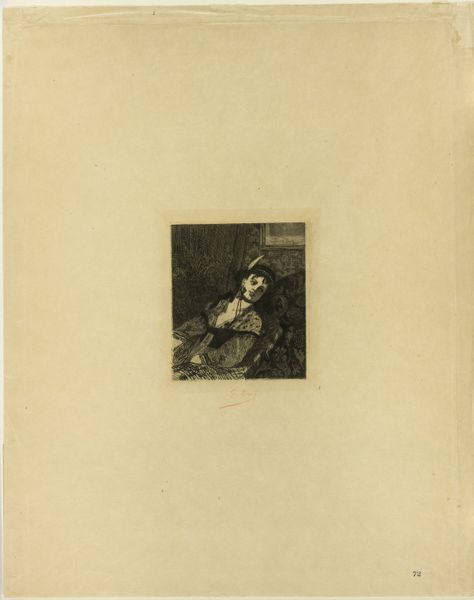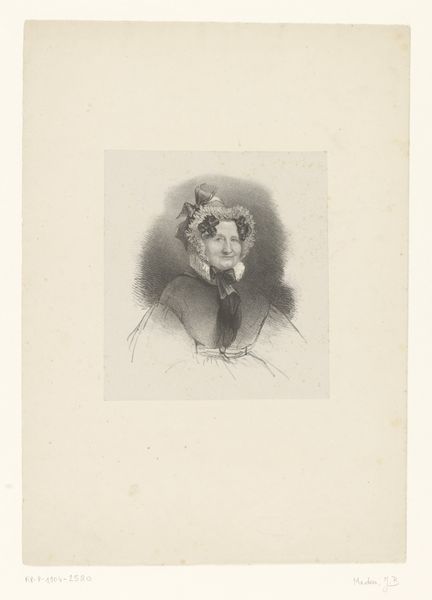
drawing, print, etching, paper, graphite
#
portrait
#
drawing
# print
#
impressionism
#
etching
#
paper
#
line
#
graphite
#
realism
Dimensions: height 85 mm, width 70 mm
Copyright: Rijks Museum: Open Domain
Curator: Before us, we have Giuseppe de Nittis' "Portrait of the Artist Edgar Degas," created circa 1875. The print is an etching rendered in graphite on paper. Editor: There's an immediacy to it. The gaze, averted, feels heavy with thought or perhaps disillusionment. The density of the etching lines around the face creates a visual weight, almost like a mask of shadows. Curator: Yes, the composition directs our attention entirely to Degas's face, meticulously capturing his likeness through subtle modulations of light and shadow. Notice how the artist uses hatching and cross-hatching to define the contours and suggest the texture of skin and hair. Editor: I'm drawn to how Degas's posture and downcast glance reflect the evolving status of the intellectual and artist within a rapidly industrializing late-nineteenth-century Europe. Degas, often an outsider himself, must have presented an intriguing figure to De Nittis. What sort of statement is he making by portraying him in this pensive manner? Curator: It seems de Nittis captured a degree of psychological depth that moves beyond mere representation. Consider also the influence of Japanese prints that was taking hold in Europe at the time – that linear sensibility is clearly visible in de Nittis' economical yet powerful strokes. Editor: Indeed, one can see in it the cross-cultural fertilization characteristic of Impressionism. This print serves as a record not merely of an individual, but of the art world during that epoch, one increasingly influenced by the dynamics of patronage, artistic rivalry, and questions of identity and place in a world undergoing cataclysmic transformation. How did their shared artistic context shape their portrayals of each other and their creative output during a time marked by revolutionary changes and tensions? Curator: A potent question that highlights the interplay between technique, identity, and cultural context. Looking at this image through these lenses enriches the formal reading, allowing a more complex interpretation of its visual language. Editor: Exactly, and in doing so, we unearth both the personal connection between the artists and something grander, as well, related to the politics of artistic representation. It certainly prompts new questions.
Comments
No comments
Be the first to comment and join the conversation on the ultimate creative platform.
